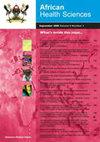关节镜下埋头螺钉内固定治疗距骨骨折的疗效观察
IF 0.9
4区 医学
Q3 MEDICINE, GENERAL & INTERNAL
引用次数: 0
摘要
目的:探讨关节镜下沉头螺钉内固定治疗距骨骨折的临床疗效。方法:选取2015年2月至2019年12月承德医科大学附属医院收治的距骨骨折患者48例为研究对象。距骨骨折患者随机分为两组,每组24例。观察组距骨骨折采用关节镜下沉头螺钉内固定治疗,对照组采用传统切开复位内固定治疗。术后3个月评估患者的临床疗效,并仔细比较观察组与对照组术前、术后踝关节功能、骨折愈合时间、住院时间及并发症。 结果:观察组总有效率高达91.67%,明显优于对照组66.67% (p < 0.05)。术前,对照组与观察组患者踝关节功能评分(AOFAS)分别为42.08±4.29、41.75±5.31,差异无统计学意义(P>0.05);术后,对照组AOFAS评分显著低于观察组:(66.28±7.51∶53.0±6.79,p < 0.05)。观察组患者愈合时间为3.19±1.04个月,住院时间为3.57±0.97天,也显著短于对照组的4.18±1.25个月和8.28±2.54天(P <0.05)。对照组总并发症发生率20.83%,高于观察组8.33% (P >0.05)。 结论:关节镜下沉头螺钉内固定能明显改善疗效和踝关节功能,缩短骨折愈合时间和住院时间,且不增加并发症的发生率。 关键词:关节镜;沉头螺钉;疗效;内固定;talar骨折。本文章由计算机程序翻译,如有差异,请以英文原文为准。
Efficacy of arthroscopic internal fixation with countersunk screw in the treatment of talus fracture
Objective: To explore clinical effects of arthroscopic internal fixation with countersunk screw in the treatment of talus fracture.
Methods: Forty-eight patients with talus fracture treated in hospital of Chengde Medical University from February 2015 to December 2019 were enrolled for present investigation. The patients with talus fracture were randomly assigned into two groups, with twenty-four patients per group. The patients with talus fracture in the observation group were treated with arthroscopic internal fixation with countersunk screw, while the traditional open reduction and internal fixation were applied for the ones in control group. The clinical efficacy of the patients was evaluated three months after the operation, and the preoperative and postoperative ankle joint functions, fracture-healing time, hospital stay, and complications were carefully compared between observation and control group.
Results: A total efficiency as high as 91.67% was showed in observation group, which is distinctly better than the effective rate of control group (66.67%, P<0.05). Before operation, ankle function scores (AOFAS) of control group and observation group is 42.08 ± 4.29 and 41.75±5.31 with no significantly difference (P>0.05); while after the surgery, AOFAS scores of control group is significantly lower than that of observation group: (66.28±7.51 vs. 53.0 ±6.79, P<0.05). Moreover, healing time and hospitalized duration of observation group are 3.19±1.04 months and 3.57±0.97 days, which are also significantly shorter than 4.18±1.25 months and 8.28±2.54 days in control group, respectively, (P < 0.05). And the total complication rate in control group is 20.83%, which is higher than 8.33% in observation group (P >0.05).
Conclusion: Arthroscopic internal fixation with countersunk screw can significantly improve the efficacy and ankle joint functions, shorten the fracture-healing time and hospital stays without increasing the incidence of complications.
Keywords: Arthroscopy; countersunk screw; curative effect; internal fixation; talar fracture.
求助全文
通过发布文献求助,成功后即可免费获取论文全文。
去求助
来源期刊

African Health Sciences
MEDICINE, GENERAL & INTERNAL-
CiteScore
2.30
自引率
0.00%
发文量
179
审稿时长
>12 weeks
期刊介绍:
The African Health Sciences is an internationally refereed journal publishing original articles on research, clinical practice, public health, policy, planning, implementation and evaluation, in the health and related sciences relevant to Africa and the tropics. Its objectives are to: Advocate for and promote the growth of reading culture in sub Saharan Africa; Provide a high quality journal in which health and policy and other researchers and practitioners in the region can and world wide, can publish their work; Promote relevant health system research and publication in the region including alternative means of health care financing, the burden of and solution of health problems in marginalized urban and rural communities amongst the displaced and others affected by conflict; Promote research and the systematic collection and collation and publication of data on diseases and conditions of equity and influence; Promote development of evidence-based policies and guidelines for clinical, public health and other practitioners. African Health Sciences acknowledges support provided by the African Health Journals Partnership Project that is funded by the US National Institutes of Health (through the National Library of Medicine and the Fogarty International Center) and facilitated by the Council of Science Editors.
 求助内容:
求助内容: 应助结果提醒方式:
应助结果提醒方式:


